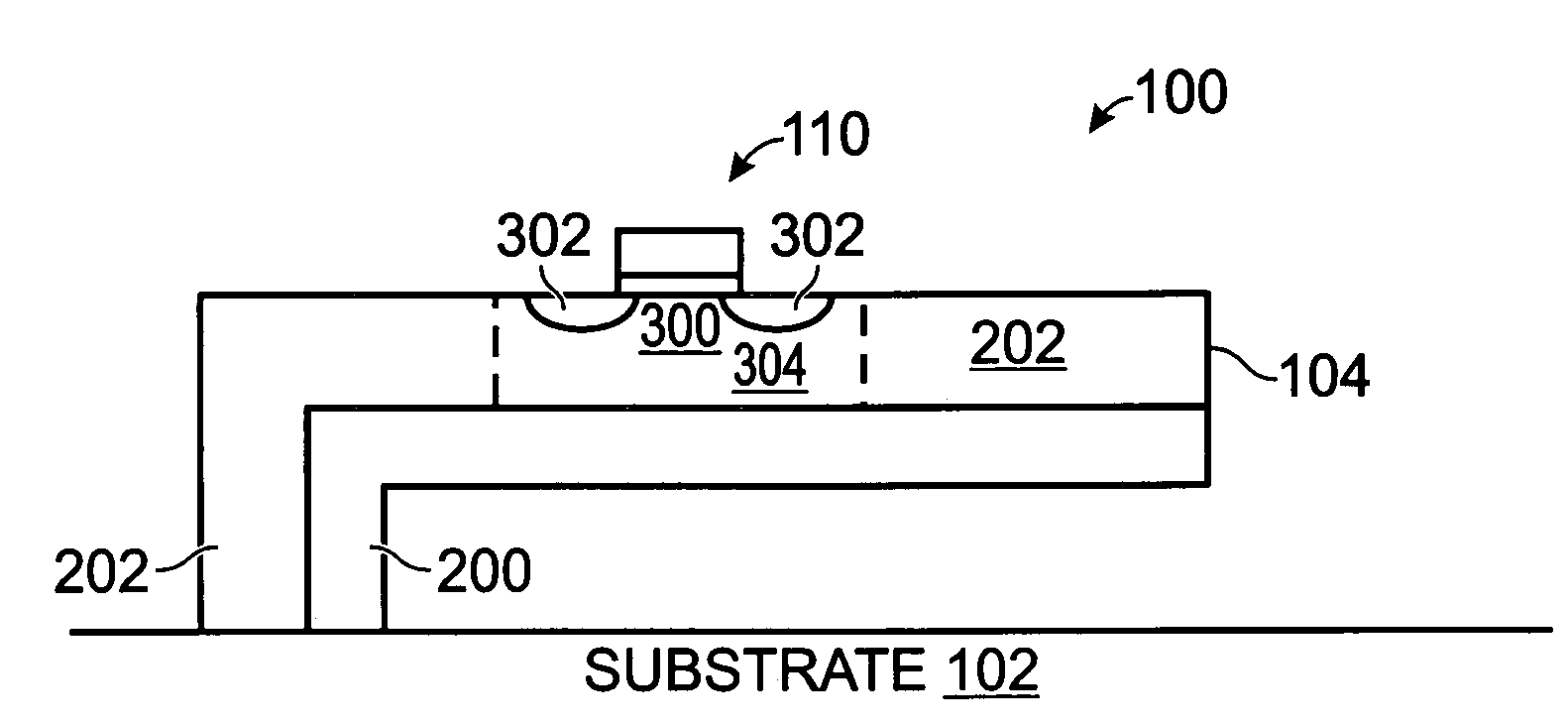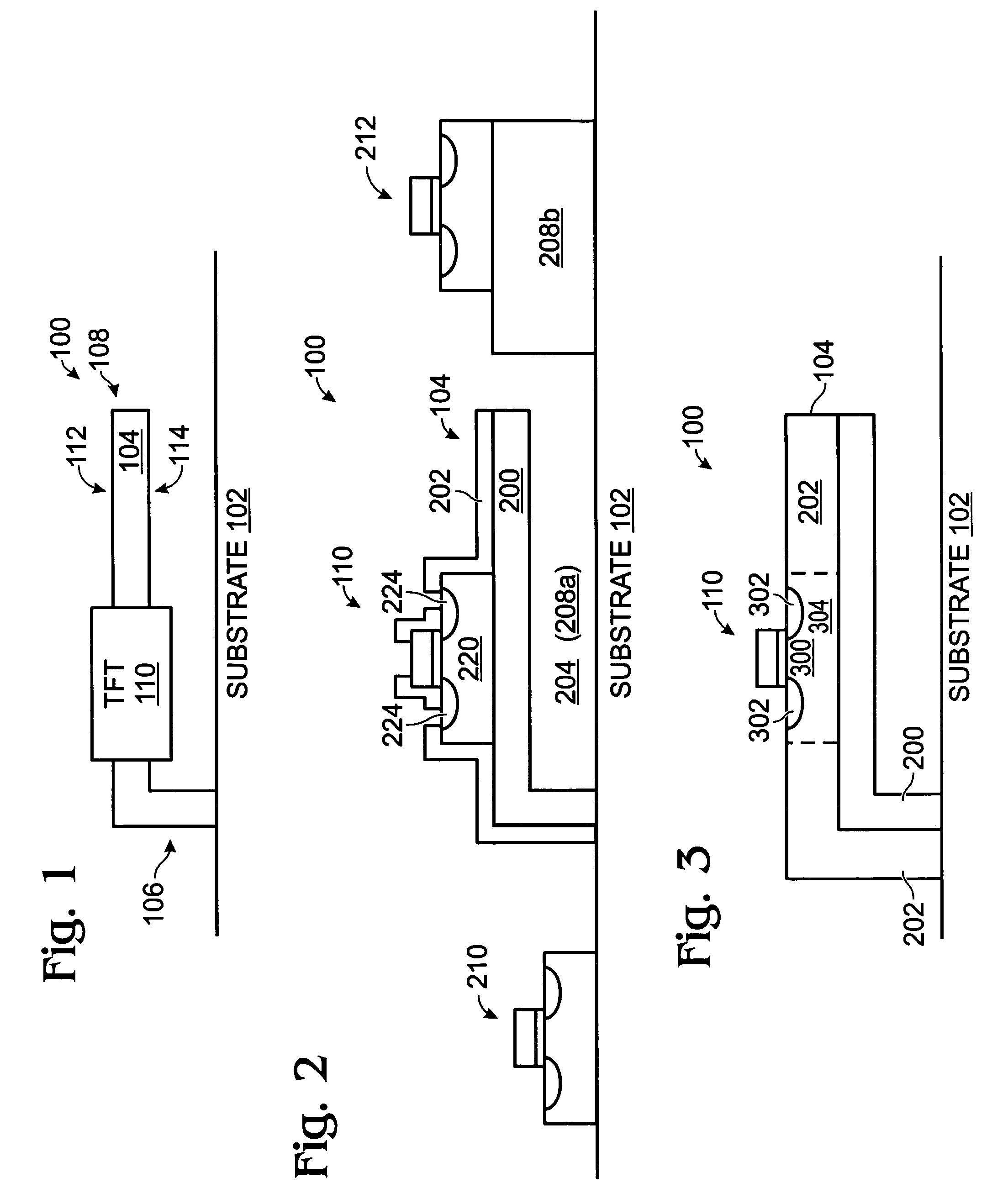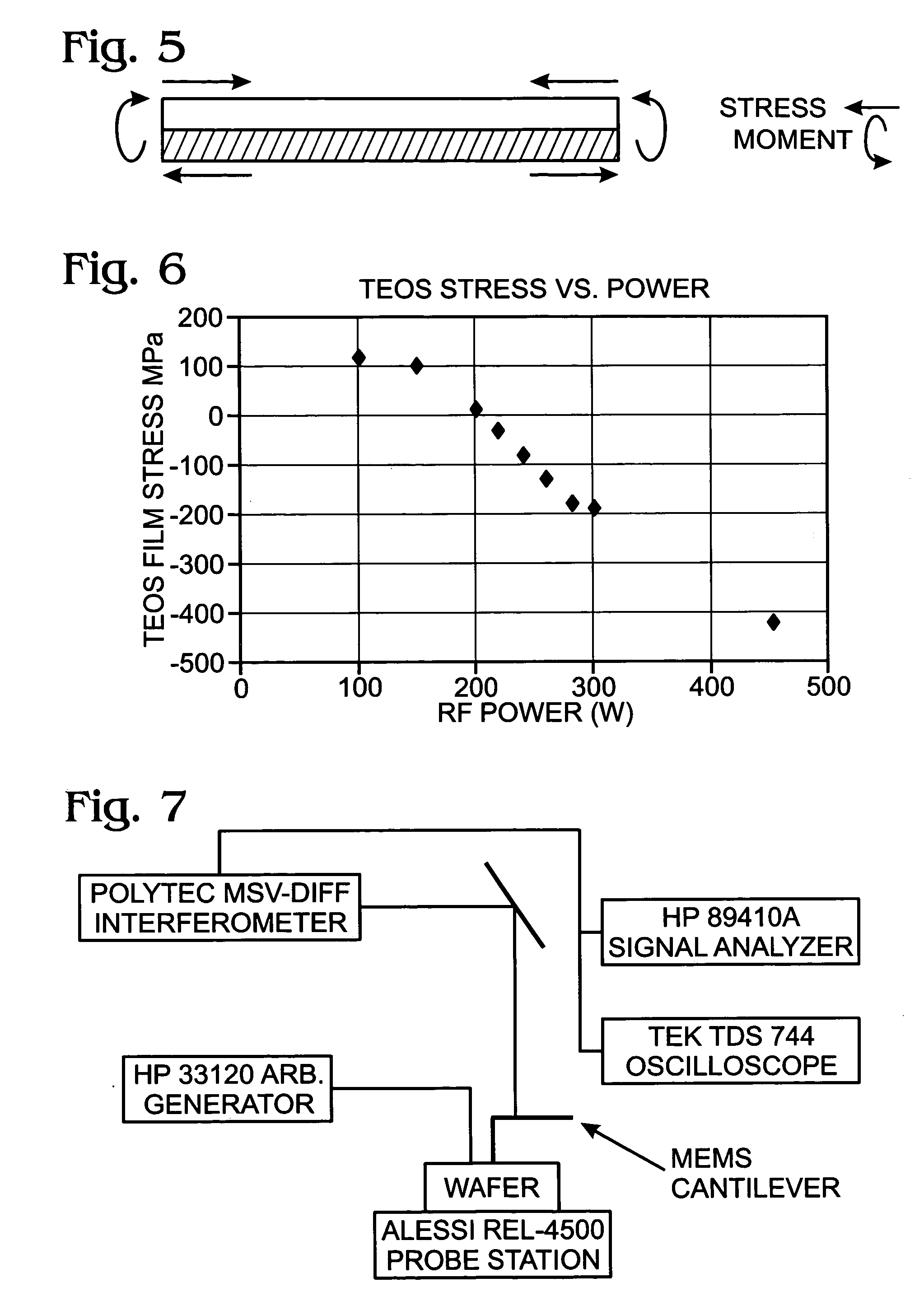Piezo-TFT cantilever MEMS
a thin film transistor and cantilever technology, applied in the direction of fluid pressure measurement, acceleration measurement using interia forces, instruments, etc., can solve the problems of difficult and expensive standardization, varied mems structure, and limited crystallization procedures,
- Summary
- Abstract
- Description
- Claims
- Application Information
AI Technical Summary
Benefits of technology
Problems solved by technology
Method used
Image
Examples
Embodiment Construction
[0040]FIG. 1 is a partial cross-sectional view of a piezo thin-film transistor (piezo-TFT) cantilever microelectromechanical system (MEMS). The piezo-TFT cantilever 100 comprises a substrate 102, made from a material such as glass, polymer, quartz, metal foil, Si, sapphire, ceramic, or compound semiconductor materials. A thin-film cantilever beam 104 has a distal end 106, anchored to the substrate 102, and a proximal end 108. Note, in other aspects not shown both the distal end and the proximal end can be anchored to substrate. Also, the shape of the cantilever body can be a simple beam shape, any membrane shape, or combinations of beam shapes and membrane shapes, with one or multiple anchors to the substrate. A TFT 110 is shown within the cantilever beam 104. The cantilever beam 104 and TFT 110 are made from materials such as a-Si, poly-Si, oxides, a-SiGe, poly-SiGe, metals, metal-containing compounds, nitrides, polymers, ceramic films, magnetic films, or compound semiconductor mat...
PUM
 Login to View More
Login to View More Abstract
Description
Claims
Application Information
 Login to View More
Login to View More - Generate Ideas
- Intellectual Property
- Life Sciences
- Materials
- Tech Scout
- Unparalleled Data Quality
- Higher Quality Content
- 60% Fewer Hallucinations
Browse by: Latest US Patents, China's latest patents, Technical Efficacy Thesaurus, Application Domain, Technology Topic, Popular Technical Reports.
© 2025 PatSnap. All rights reserved.Legal|Privacy policy|Modern Slavery Act Transparency Statement|Sitemap|About US| Contact US: help@patsnap.com



